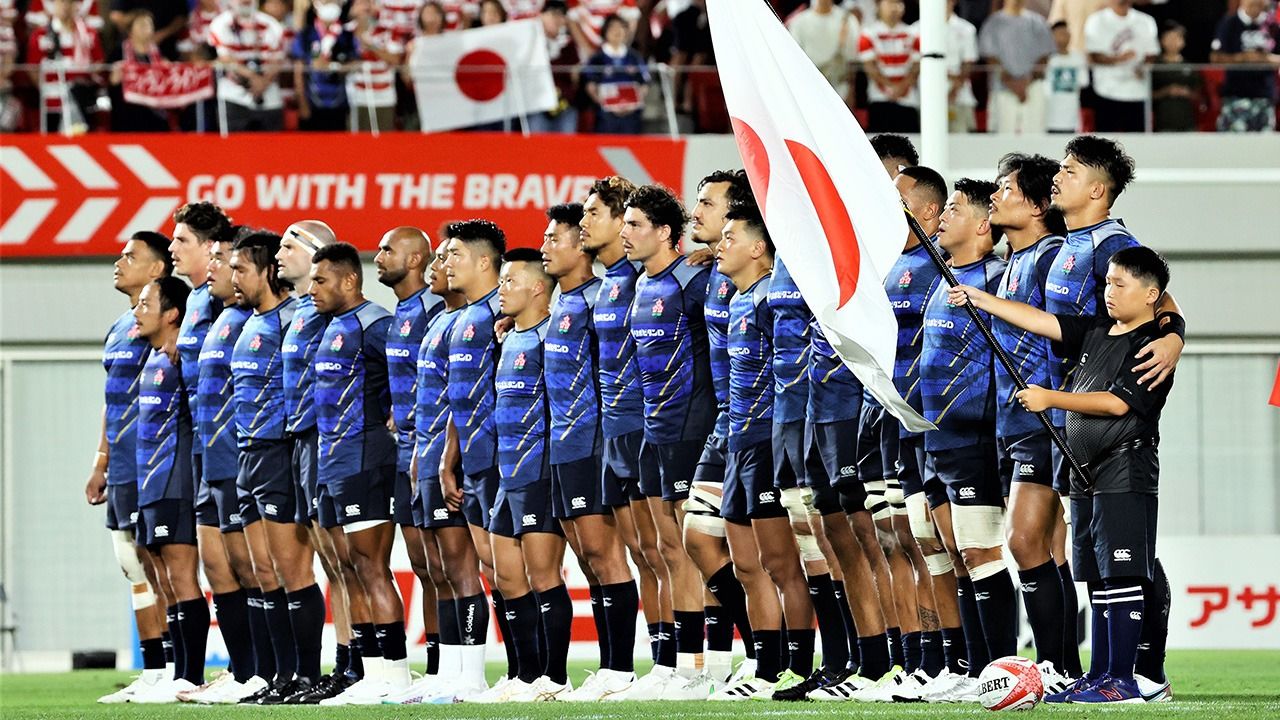
A Newly Named Japan Team Heads to Rugby World Cup to Win
Sports- English
- 日本語
- 简体字
- 繁體字
- Français
- Español
- العربية
- Русский
Victory as the Goal
Rugby fever swept Japan in the autumn of 2019.
It was the first ever rugby world cup hosted in Japan—and indeed, in Asia. The national team took first place in the first round A pool, going four for four against major teams like Ireland and Scotland. It was the first time Japan made it to the top eight.
Captained by New Zealand–born Michael Leitch, the team was built under the catchphrase of “One Team” of players from all kinds of backgrounds: Australia, South Africa, Tonga, Samoa, South Korea, on and on. It won the hearts of many as a role model for a diverse, modern society. After the tournament, the team appeared in a parade in the Marunouchi district of central Tokyo attended by some 50,000. Japan’s rugby team left an impact on society that transcended mere sports.
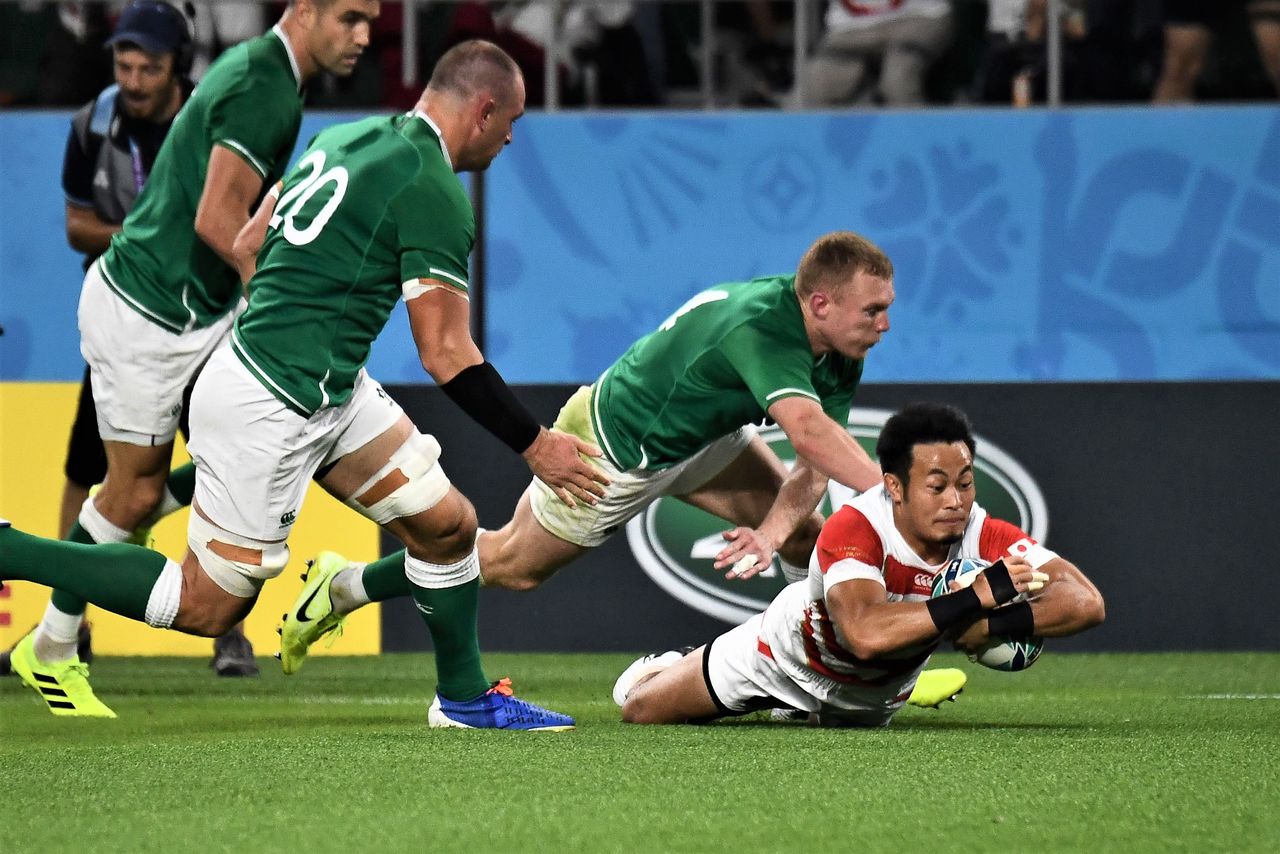
Player Fukuoka Kenki deciding a try against Ireland in the second match of the semifinals of the 2019 world cup on September 28, 2019, in Shizuoka. He is currently studying to become a doctor. (© AFP/Jiji)
It has been four years, and the next Rugby World Cup is upon us.
This time, the Japan team is in a new position. That historic advancement to the top eight of last time is no longer a goal, but an expectation that must be met. The players themselves have made this clear. From the start of training camp three months before the tournament, team members have said over and over that the goal this time is the championship.
There are probably those ridiculing that as a pipe dream. In the history of the world cup, New Zealand and South Africa have won it three times each, Australia twice, and England once. That’s it.
But Japan’s players are not speaking lightly. Training camp started June 12 in Urayasu, Chiba Prefecture, and the players have been heard saying it is their hardest ever. They start every morning with an hour of tackling practice in a tent set up in one corner of the field.
Jūjutsu (jiujitsu) and mixed martial-arts specialist John Donehue, who also has extensive experience coaching in the Australian 13-man rugby league, has set up a program of one hour of tackling and contact without breaks or water. During the course, any signs of “weakness,” like putting hands on knees, hips, or head, results in a penalty for the whole team. It’s a harsh training program that seems somewhat anachronistic in terms of modern safety and compliance ideals.
National team director Fujii Yūichirō says of the practice regimen: “If we want to be the world champions, we can’t lose on contact.” In the 2019 tournament, the team advanced to the top eight by adapting its tactics, using ingenious attacks and a tight scrum that resulted in an amorphous approach. They lost in the semifinals, though, to the eventual victor South Africa. Their issue now is how to build tough bodies that can withstand six weeks of continuous physical assault without wearing out, as well as putting together a deeply layered roster of players that can maintain top fighting shape over the long haul.
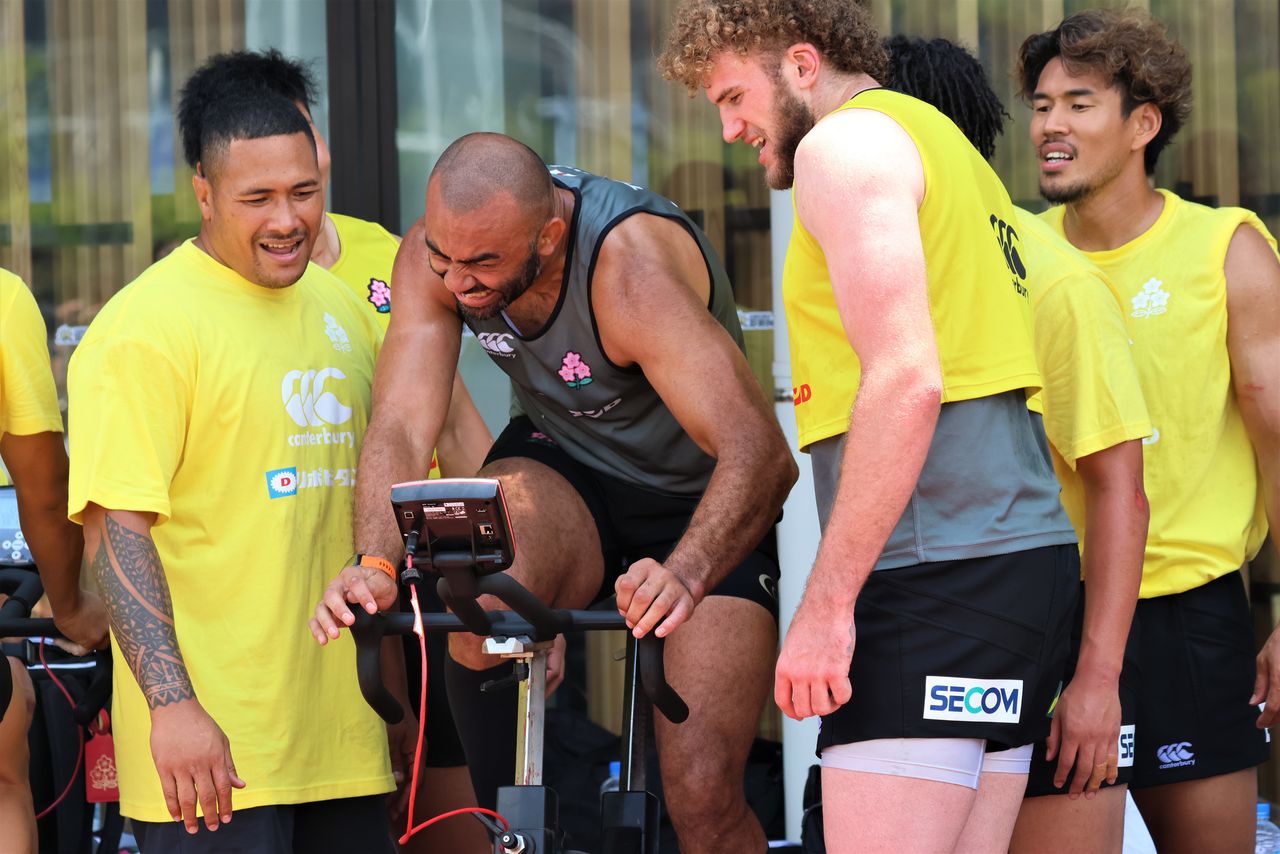
Michael Leitch throws his body into practice training camp. Veteran Leitch is captaining his second world cup squad at age 34. (© Ōtomo Nobuhiko)
Four Years of Evolution
The rugby world has a strict hierarchy. There are 10 nations considered tier 1, which get priority in matchmaking. These are made up of the Six Nations Championship teams of Europe—England, Scotland, Ireland, Wales, France, and Italy—and the southern hemisphere’s Rugby Championship competitors of New Zealand, Australia, South Africa, and Argentina.
Below them are the tier 2 teams, made up of Japan, Pacific Island nations like Fiji, Samoa, and Tonga, and European teams that do not reach Six Nations status, like Georgia and Romania. These teams struggle to get test matches against top-ranked countries.
With such a strict hierarchy, teams try to increase opportunities to play against higher-ranked nations to build national player experience, strengthen their roster, and build overall competitive ability. Japan’s top eight finish at the 2019 world cup was supposed to be a jumping board to just that, but the COVID-19 pandemic starting in 2020 led to the cancellation of numerous international matches.
So, has Japan’s national team managed to make any progress? There are two ways to answer that question.
In a July 2022 double-header match against France, Japan lost the first go 23–42, but managed to close the gap in the second match, losing by a more respectable 15–20. In October, Japan faced New Zealand, losing 31–38. The national squad was unable to defeat these top-ranked sides, but the fact that it has been catching up and managing some reverses is evidence that Japan is showing real improvement.
The 20-year-old lock Warner Dearns, who joined Toshiba Brave Lupus Tokyo from Ryūtsū Keizai University Kashiwa High School, scored a try against his home country’s national team during the New Zealand game, while 21-year-old Kobelco Kobe Steelers fly-half Lee Seung-sin led the game against France.
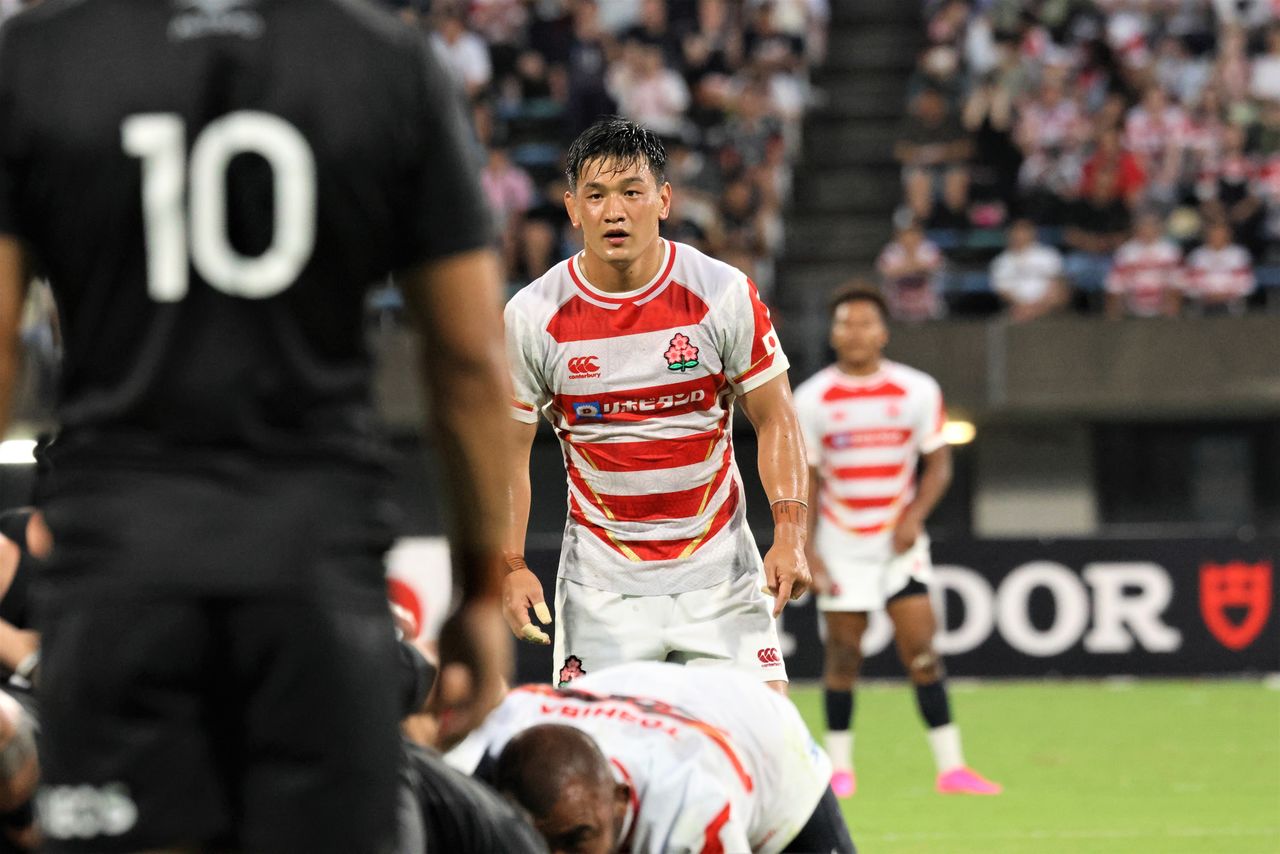
Young fly-half Lee Seung-sin is heading into his first world cup. In training matches, he became a point maker with unmatched kicking accuracy. (© Ōtomo Nobuhiko)
This year will see debut performances from Osada Tomoki, a center with the Saitama Wild Knights who won the League One rookie of the year award, and Fukui Shōta, who is in his fifth season with the Wild Knights after joining straight out of high school. Young players like these growing into the game are a steady source of new strength for the Japanese national squad.
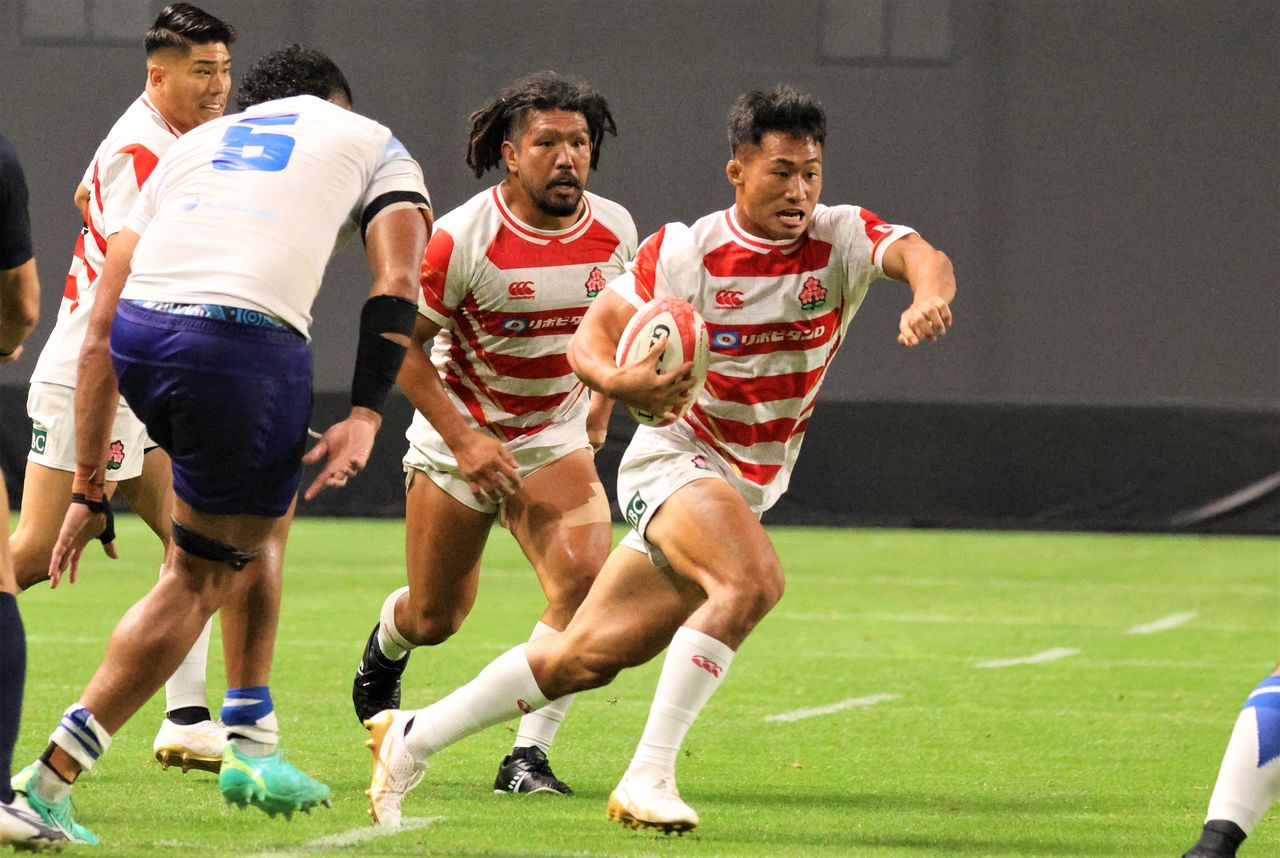
Center Osaka Tomoki made his mark with the Saitama Wild Knights, a League One leader, and is carrying high hopes for the national team. (© Ōtomo Nobuhiko)
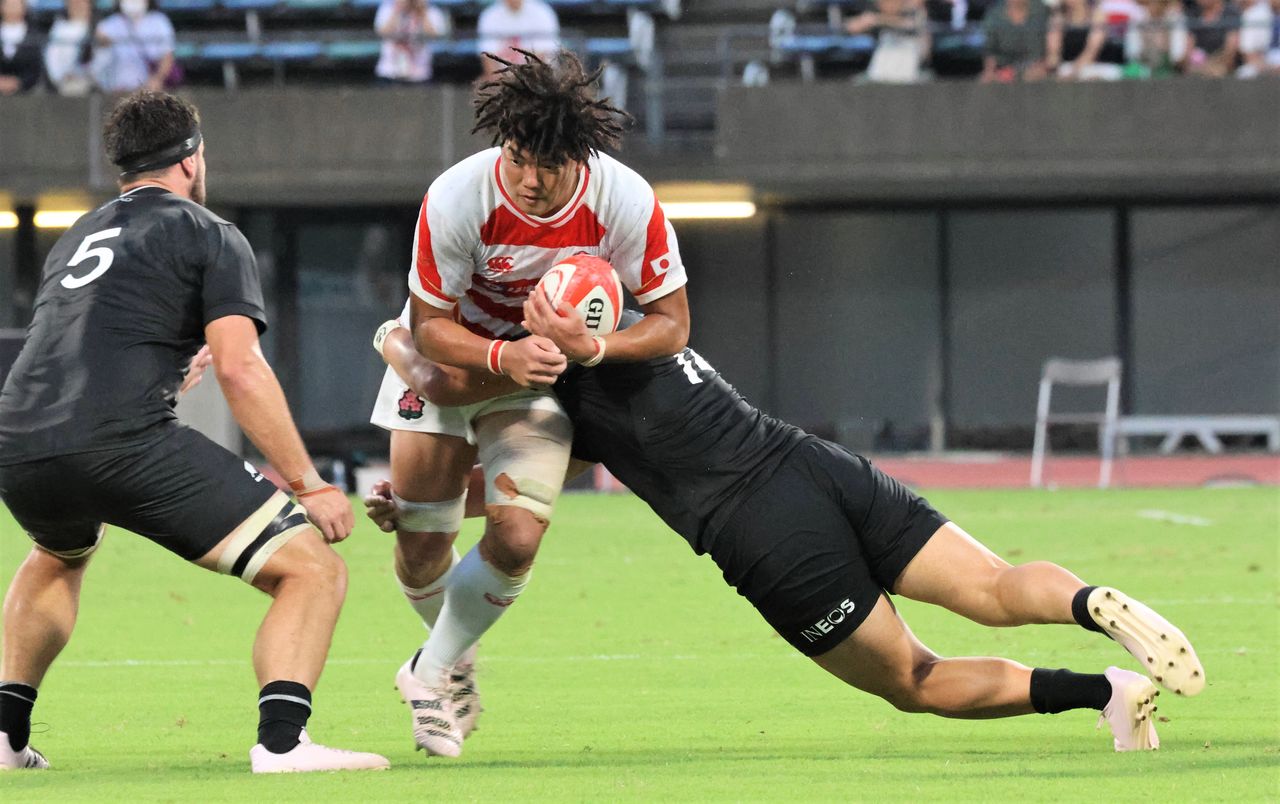
Fukui Shōta drew attention by signing a pro contract right after graduating from powerhouse Higashi Fukuoka High School. (© Ōtomo Nobuhiko)
At the same time, it is undeniable that the team has not won a single game against a top-tier nation since the 2019 World Cup. One possible explanation for that is the disbanding of the Sunwolves, a team formed around national squad members to compete in Super Rugby. From 2016 it played weekly matches against New Zealand, Australia, South Africa, and Argentina, building much-needed experience. Its active playing came to an end in 2020, though, due in part to the pandemic.
Japan Rugby League One, which was restructured from the Top League in 2022, now attracts even more top players from overseas and has more matches, but head coach Joseph points out: “The toughness is totally different from matches with overseas sides.” On their November 2022 European tour, the team was destroyed 13–52 by the same England team Japan will face at the World Cup. Against France, whom Japan kept to a five-point lead in Tokyo in July, it suffered a 17–35 loss on the opposition’s home field. The reality is that Japan has yet to reach the point where it can consistently compete evenly with top-tier teams.
Japanese Rugby Comes of Age
Even so, Japan’s position in world rugby has undergone a shift.
In May 2023, the World Rugby governing body announced that Japan had been designated a High Performance Union. That is the official name for what was once known as tier 1: The 10 nations are now 11. The domestic media, eager as ever for an eyeball-grabbing headline, was quick to announce that Japan was now a tier 1 rugby side.
The conditions for being named HPU do not rest solely on the strength of the men’s 15-member national team, though, but the overall strength of the 15- and 7-member men’s and women’s teams, as well as governing body compliance and financial backing. As Iwabuchi Kensuke, chairman and CEO of the Japan Rugby Football Union, points out, “It doesn’t equal a strong national team.” World Rugby itself is moving away from the exclusive sounding “tier” classification, so what Japan has gained is recognition as a nation with a mature rugby culture, rather than an elite status dependent on a record of wins and losses on the pitch.
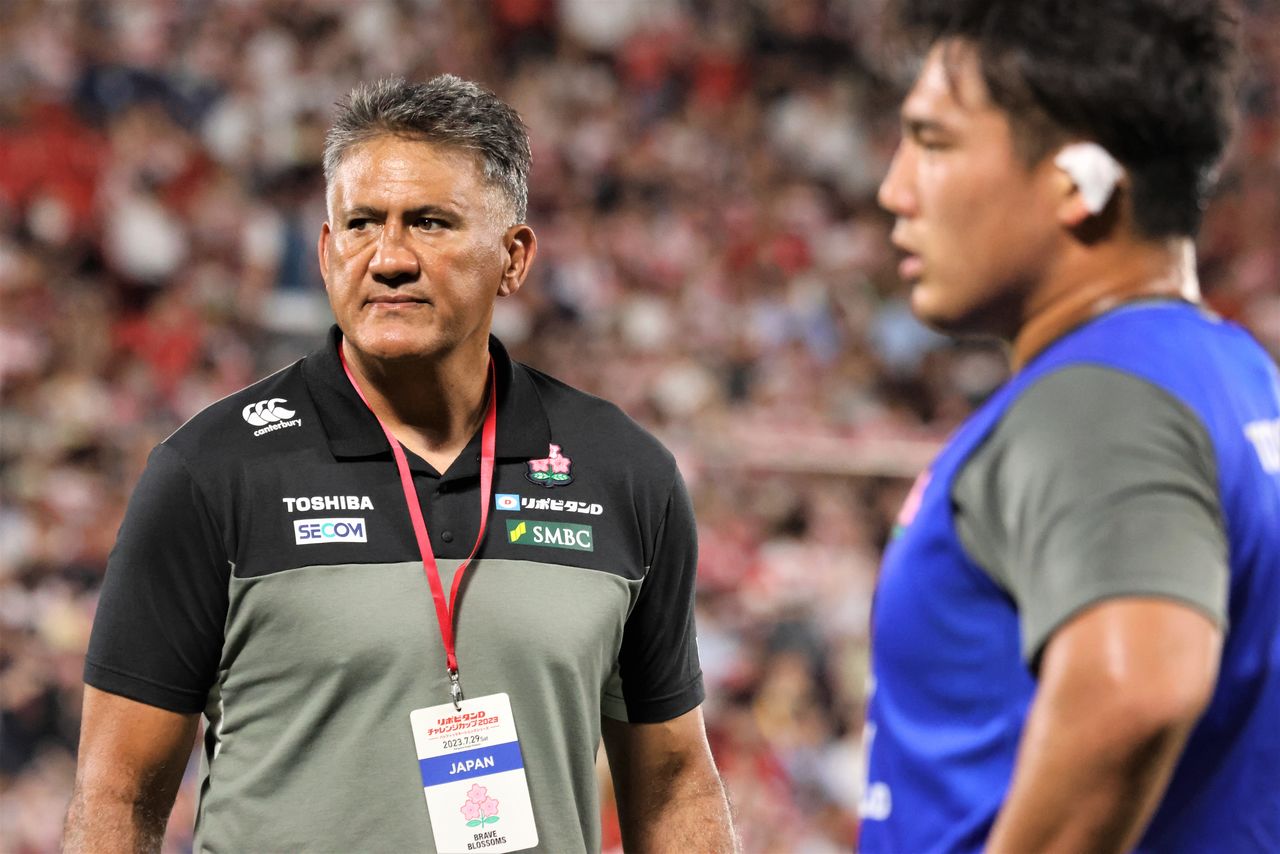
Head coach Jamie Joseph, left, has announced he will retire after the World Cup in France. What kind of play will he show at the culmination of his eight-year stint? (© Ōtomo Nobuhiko)
Even so, there is no better showcase of a nation’s overall strength in rugby than the 15-member men’s world cup side.
“Japanese rugby changes its playing style for every opponent. It really surprised me.” That’s what South African flanker Pieter Labuschagné, who turned in a stunning performance at the 2019 World Cup, said after playing with the Sunwolves in 2018. European sides try to dominate opponents with set plays, taking advantage of their physical strength, while Southern Hemisphere teams seek to overwhelm with high-speed attacks that keep the ball moving. Japanese rugby does not fit into either kind of structure.
Japan’s versatile playing style served it well in both the 2015 World Cup, when Japan broke through under Eddie Jones, and the 2019 tournament when Jamie Joseph led the team to the top eight. Against South Africa and Ireland, who are good at set plays, Japan effectively used kicking to create unstructured situations and gain an advantage, while against Samoa, who excel at unstructured play, Japan kept the ball still and applied pressure with set plays. This versatility, something unique to Japan, has enabled it to perform well against the global rugby elite and raise its global reputation in the sport.
(Originally published in Japanese. Banner photo: Japan’s players singing the national anthem before the match against Tonga at the Lipovitan D Challenge Cup in Osaka on July 29, 2023. It was the national team’s first victory of the season. © Jiji.)